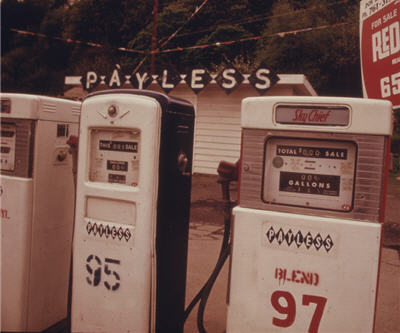
Econbrowser gives a great explanation of why the spread between West Texas Intermediate has risen so high compared to Brent and why gas prices still won’t fall.
The spread is at near historically high levels, despite a new pipeline connecting the oil back-logged Cushing with the Gulf Coast.
Eliminating the Brent-WTI price differential would require that any arbitrageur could buy another barrel in Cushing and transport that additional barrel to the Coast at low cost. We’re still a long way from that. We need not only to balance current flows of supply and demand, but also to work down the inventory of oil that has piled up in Cushing. Commercial crude oil inventories in PADD2, the oil district including Oklahoma, today are 50 million barrels higher than they were in 2008.
Until we reach that point of having the logistical ability to transport easily as many barrels as desired out of Cushing, the only way for the Brent-WTI price gap to close is if the extra supply delivered to the coast is enough to actually bring down the world price. We may reach that point if we had capacity to move both the daily new flow and all the existing pool, but we’re not there yet.
Econbrowser notes Brent crude oil and gas pretty closely track one another, and that means gasoline is actually underpriced by 20 cents.
Image of gas pumps from The U.S. National Archives